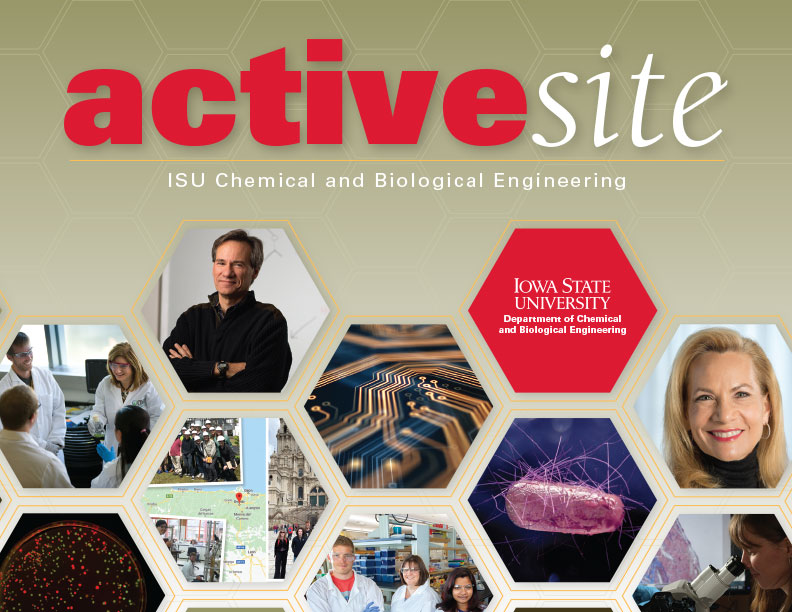
Department of Chemical and Biological Engineering assistant professor and Herbert L. Stiles Faculty Fellow Matthew Panthani was awarded the prestigious National Science Foundation CAREER Award in April 2019.
The Faculty Early Career Development Program (CAREER) honor is one of the most sought-after awards for university-level teacher-scholars who are in the early stages of their careers. It supports those who most effectively integrate research and education into their work. A particular research topic for the individual is selected for the honor.
Panthani was funded for “Synthesis and Properties of Group IV Colloidal Quantum Wells.” The research is aimed at continuing the arc of creating better, more efficient ways of transmitting data for computer processors that will benefit areas such as education, health care, scientific research and national defense.
“The current method of using fiber optic cables to transmit data over long distances has become very energy efficient in recent years,” Panthani explains. “But – when we transmit this data over a short distance, there is a lot less efficiency.” He uses the example of the computer you may have on your desk right now: “When you use that computer it generates a lot of heat. The computer circuit chips in that computer contain miles and miles of wiring that heats up a lot and this heat limits the computer’s performance.”
Panthani and his research group are tackling this issue by developing a way for this data to be transmitted using optoelectronic properties (a laser is an example) instead of through wiring. This is done by thinking small. Very small. One-thousandth the width of a human hair small. That’s the thickness of ultrathin sheets of semiconductor material using silicon or silicon mixed with the chemical element germanium. But the sheets need material on top of them to perform the needed functions. Panthani’s group is experimenting with controlling and coordinating the composition, structure and chemistry of molecules attached (ligands). The plan is to have each molecule coordinated with a ligand to help protect it from things that can inhibit performance. The goal is to make processing of electronic devices better for computing and telecommunications.
A key team member in the research has been graduate student Bradley Ryan, who began his involvement with Panthani’s research in 2014 as an undergraduate and has now continued on with the team as a graduate student. Ryan says he is “enthralled by investigating and understanding the reality that lies beyond what we know.” In this case, what is known is that “this research has the potential to benefit society by enabling technologies that can lead to integrated photonics, which would enable faster, lighter and more efficient personal devices.” He says these areas “need engineers to mature technologies for implementation in commercially available products.”
“Dr. Panthani enables me to think for myself, push the boundaries of science, and develop the skills that I need to be a successful scientist,” says Ryan. “He is a main reason why I came back to Iowa State University to pursue a graduate degree.”
The NSF CAREER award provides funding for the project to 2024. “But we have already established different directions to move in, and we have collaborators who are now interested,” says Panthani, “including physicists at Argonne National Laboratory to look at silicon-based laser technology.”
And perhaps one of the biggest contributions the research project will make is to help spread scientific knowledge and interest to K-12 students. “One of the goals of the grant is to have my group work with high school teachers to increase their exposure to scientific endeavors. It’s all part of the Next Generation Science Standards, a national program for students,” Panthani explains. “This program stresses the importance of moving away from just learning facts to actually experiencing the process of science. Teachers typically don’t have hands-on experience in these processes. This program will have me working with science teachers in the summer to give them the kind of real world exposure they need to better teach their students, and we will collaborate with them to help them achieve this.” The program will also help encourage underrepresented groups to pursue careers in STEM fields.
Panthani joined the Iowa State CBE faculty in 2014. His research focuses on addressing global challenges in the areas of energy production, utilization and efficiency.
